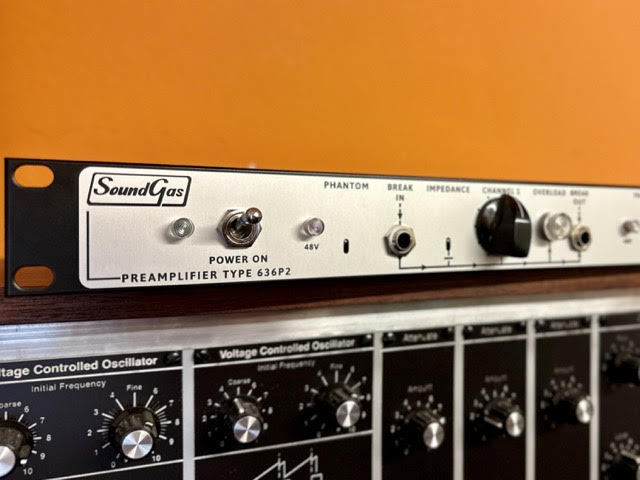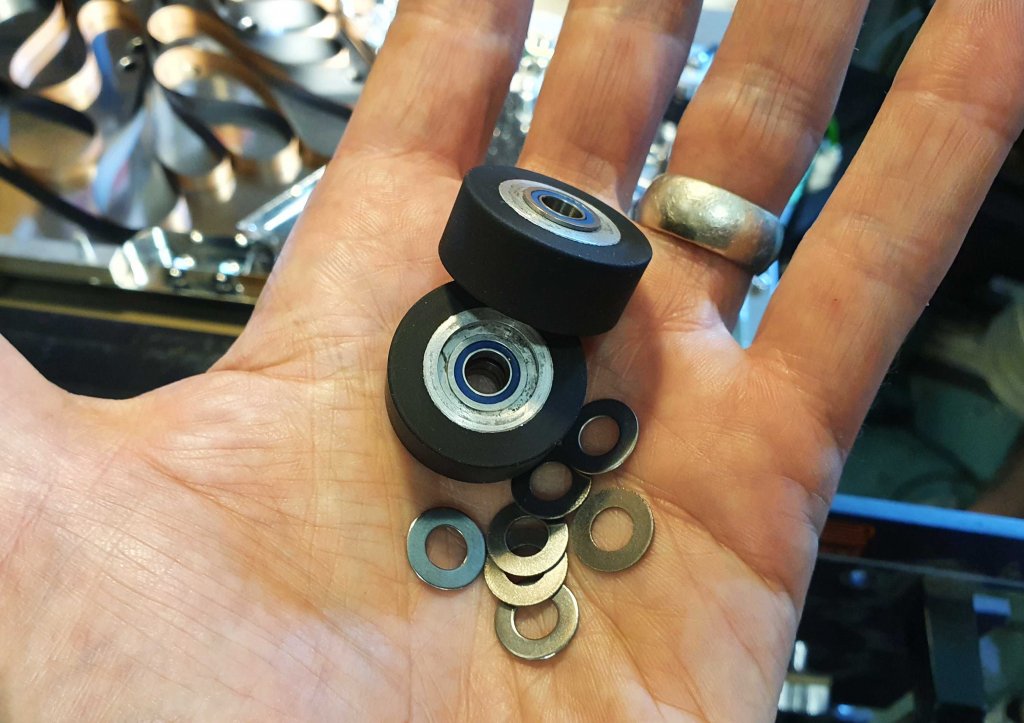
Roland Tape Echo Tips, Tricks & Tales
This page is a work in progress – there’s always going to be someone somewhere doing something we hadn’t thought of with a Space or Chorus Echo, using it in a way that probably the designers (whoever they were, sadly Roland no longer seem to know…) never envisaged.
But first see above for one our Space Echoes in Adrian Utley’s studio. No story – it just makes us happy looking at it.
And (because we get a lot of comments asking us to do this), here’s what happened when Dec walked past a pile of Space Echoes and thought ‘I wonder what’d happen if we cascaded four of them together?’
Then there are the stories; anecdotes about that time the Sound On Sound was accidentally switched on mid-take and magic happened. We welcome contributions from anyone with a Space/Chorus Echo tale to tell or tip to share, and will reward the best with untold riches, or a T-shirt.
Read on for some of the tape echo tips we’ve picked up from years of using and testing many, many Roland Space and Chorus echoes; plus insight/tips from our experienced tech, Doctor Huw (BBC trained, latterly tour tech with Portishead, Massive Attack and Robert Plant – responsible for keeping echoes/gear running on tour); and also information from friends and customers on how they use these iconic machines.
Then there are the stories; anecdotes about that time the Sound On Sound was accidentally switched on mid-take and magic happened. We welcome contributions from anyone with a Space/Chorus Echo tale to tell or tip to share, and will reward the best with untold riches, or a T-shirt.
Read on for some of the tape echo tips we’ve picked up from years of using and testing many, many Roland Space and Chorus echoes; plus insight/tips from our experienced tech, Doctor Huw (BBC trained, latterly tour tech with Portishead, Massive Attack and Robert Plant – responsible for keeping echoes/gear running on tour); and also information from friends and customers on how they use these iconic machines.
====
Wet-only from any input: One of our favourite RE-201 tips is when you want to it on an aux send to get a wet-only signal while still using the preamp inputs. You can, of course, go in to the PA input, but what if you want to use those magic preamps as well? Simple: plug a blanking plug (any quarter inch jack plug you have to hand) into the PA input – this cuts the dry signal from the mix. Voila! Wet-only output.
====
Those preamps… Lots of musicians and engineers like to record through the RE-201 Space Echo preamps without any echo or reverb at all – they have a distinctive sound/character you’ve heard on thousands of recordings. Not to be overlooked.
====
Spring Tank(s): the distinctive Roland spring reverb is everywhere in recorded music. Of course, you’ll hear them all over dub and reggae, but they shouldn’t be viewed as just a lofi effect; used sparingly, they can sound just right (dare we even say, classy?). We use mono Roland spring in a lot of our recordings and love the sound. Andrija Tokic took things further when he made good use of his RE-201 when recording and mixing Alabama Shakes’ superb debut album, Boys And Girls. He didn’t just use it for the tape echo and on-board spring reverb, but also as a spring tank driver – disconnecting the on-board tank and hooking up other tanks with different decay times and character. (IMPORTANT – only open up mains powered gear if you are qualified to do so – we do not recommend this course of action otherwise – mains voltage can kill!). So don’t just use your Roland echo when tracking – it can bring a great deal to the mix stage also.
====
Stereo Space Echo: Yes, why stop at one? Some of our customers use two Roland echoes in stereo – naturally this is not for those seeking stable and precise stereo effects – but for the more sonically adventurous, it can yield stunning and unique results. We have now created a separate resource for more info about stereo tape echo business, however you can hear two Soundgas RE-201s (matched as closely as possible from a selection of several machines) on Sherlock composer Michael Price’s beautiful, improvised Piano Diary 14 below:
====
Un-real to real: Want a characterful tape sound on your recordings but the finances don’t run to reel to reel tape? Record your Space Echo wet only signal (with the feedback down) into your DAW and you have instant tape vibe (recording a click or beat at the song or section start makes it easier to align the recording later).
====
Saturate: It won’t come as news to our regular readers that we have a fondness for overdriving pretty much everything that comes our way. Tape is especially good at soaking up excess input, squashing and thickening the signal in a very pleasing manner. Add in those lovely early Roland preamps (see above) and you have a recipe for much sonic joy. We abuse the inputs to our echoes like you wouldn’t believe, so don’t be afraid to push that VU meter needle well into the red. In fact always try it – if you don’t like what you hear, back off until things clean up.
PS: For those reading this and scoffing at the idea of a Space Echo ‘cleaning up’, ours do. If yours doesn’t come clean, do some basic maintenance (clean heads/change tape); if it still doesn’t get clean, get in touch – it probably needs a service and we may have space (pun intended) in the diary.
====
Don’t change the tape: Sometimes the rules need to be broken – Doctor Huw recounts tales of being on the road with Portishead and having to change the tape loops in their echoes while Geoff and Adrian weren’t looking. The sound of old/degraded tape was an essential part of their sound and Huw had to balance keeping things authentic with avoiding the tour tech’s nightmare of a loop failing on stage mid-performance. So if you want things clean, and your machine to run well and reliably, clean the heads and change the tape regularly. But if you like dirty/characterful repeats that are worlds apart from the source signal, leave that old tape in (or keep an old one to hand for sessions where you want that sound).
====
More wet-only business: With the RE-301, 501 and SRE-555 you can turn off the direct signal. Obviously this is primarily intended for patching it into an effects loop or studio, however it also gives you the ability to isolate just the output from the chorus, delay or reverb, or any combination. With the chorus on full and plenty of reverb you can get some very peculiar emanations from your machine with all kinds of sources – synths and guitar work well (and we’ll add a demo of this very soon), but also you can get beats to mutate in interesting ways, as you can hear in this quick experiment with one of our RE-301s and a Korg KR-55:







